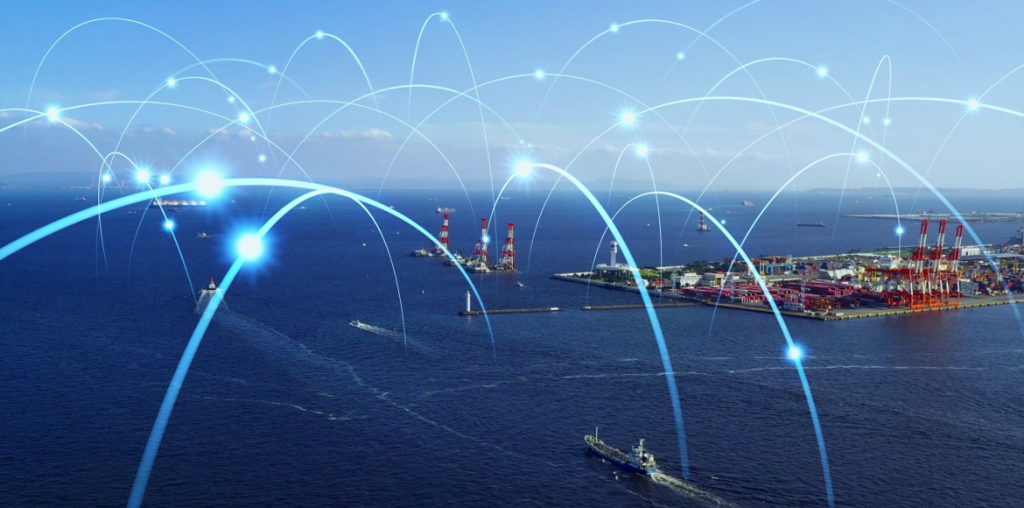The Future is Connected

Maritime safety and efficiency are huge concerns for the industry and getting bigger. The rise of automation, the reduction in crew numbers, the risk of cyber-attacks, the environmental crisis – these all provide different challenges in a rapidly changing world.
This mass change makes risks and their consequences more difficult to predict. Yet they must be identified, mitigated and resolved – quickly.
Can you see the risks?
Where do you start? High-impact, low-frequency events within the maritime industry are notoriously difficult to predict.
Traditional risk-assessment methods do not provide all the data needed to prevent incidents. Every mariner has a unique set of experiences, and as a result, different assessments of risk. This human insight is valuable, but it isn’t infallible.
Shipping companies usually only have access to their own incident management systems. When it comes to high-impact incidents, there is just not enough data to accurately assess risks.
The key to overcoming this knowledge gap is collaboration and connectivity.
Data in, data out
The industry is automating rapidly in an attempt to reduce the reliance on human intervention, and therefore reduce the risk of errors.
This technological approach makes gathering data about vessel and component performance quicker and easier. Automation drives an increase in robust data because:
1. Systems record all information automatically
1. Companies can use machine learning to apply ever-better practices based on new data
1. Final information output depends on high quality data. More accurate data means better insights.
To make a real difference, this information needs to be shared across the industry, spreading safety best practices across the seas. A connected future is a safer one.
The shift towards connectivity
Technology and the data it records is crucial to improving maritime safety, but it is not the end result. Data cannot move safety forward by itself – it needs to be shared, analysed and used to drive actions.
The massive advantage technology provides is the ability to analyse and transmit data more easily. In other words, technology facilitates connectivity.
Learning from the maritime community
Connectivity provides an incredible information resource. Answers to almost any question are at our fingertips via a few taps of a keyboard. Whatever you need to know, there is help at hand: through social media, forums, YouTube ‘how to’ videos, specialist websites and more. You can start with what is already available and use the data to solve your particular problem.
Imagine that:
1. You discover an unknown problem with a piece of equipment
1. You can immediately search to see if anyone else has experienced the same
1. If they have, you can see how they were able to resolve it
1. Even if the exact solution to your problem is not available, others’ experiences can help you narrow down a resolution.
The maritime industry is realising the mutual benefits of working more closely together. The more knowledge is shared, the quicker the improvements, as more and more risks are identified and mitigated by the greater volume of data.
Safety is just the start
If we continue to build connectivity, we can learn from each other to improve the industry for everyone. This includes 3 particular key areas:
1. Safety
1. Efficiency
1. Environmental improvements
While safety risks are always the first priority, a culture of connectivity helps the whole industry. More knowledge increases skills for crew members, and machine learning improves systems and processes, with benefits including:
– Fewer incidents of all kinds. Even when they are minor inconveniences, incidents still reduce efficiency – the fewer there are, the better for everyone
– Improved efficiency so your people spend less time monitoring and fixing technical issues
– Mariners are freed up to utilise their skills more productively to deliver improved performance for your company
– Improvements in time and financial efficiency help you focus on permanent resolutions to long term issues.
Environmental improvements are obviously a very high priority and will only become more so. Industry conversations on how to respond are critical.
Data connectivity can play a huge part by demonstrating the impact of new technologies and techniques on the environment. It is also key to understanding how to manage new technologies efficiently and safely.
It’s time to predict the future
You have made your crucial first step– you have gathered all of this data.
To optimise its value, however, requires step 2: making sense of the information.
To make the most of your data, you need a statistical modelling system to pinpoint the biggest risks you face, and the priority order to deal with them.
Combined with your real-life experiences, you will know where, how and when to act, in order to:
1. Increase safety for your crew
1. Improve efficiency and thus your bottom line
1. Reduce technical issues
1. Improve your carbon footprint
In short: to help save time, money, the planet and human lives.
HiLo has developed and proven our accurate predictive model, based on the analysis of hundreds of thousands of data points every year. This is based not on incident reports, but on the whole system of information collected by shipping companies every day. Our analysis includes data from inspections and audits, machinery breakdown data, port documentation and more – identifying leading indicators that are missed elsewhere.
Read more about how our model works.
Let us help improve your fleet safety
Our aim is to get all seafarers home safely, and our industry-leading predictive modelling gives you the tools to achieve this. The more companies who share their data with us, the more we can reduce the risk of incidents that can impact the entire industry.
Request a demo today and take advantage of detailed, regular risk analysis to see where you need to act to make the biggest difference for your fleet.